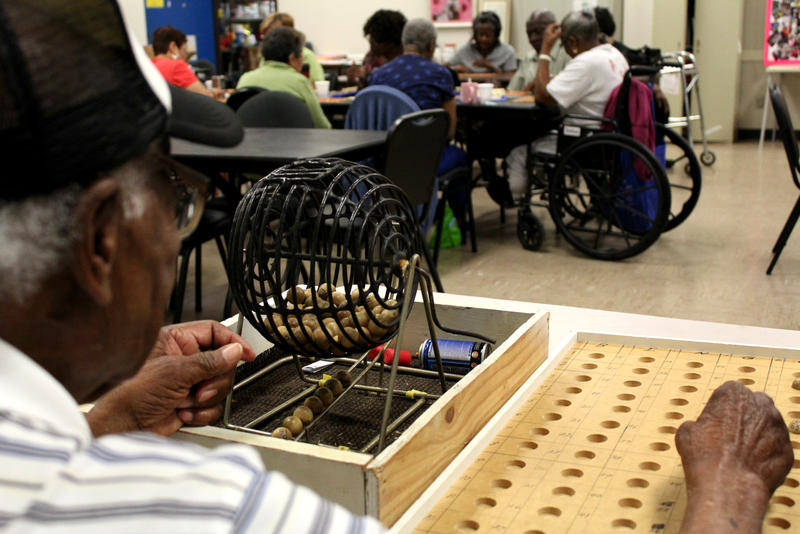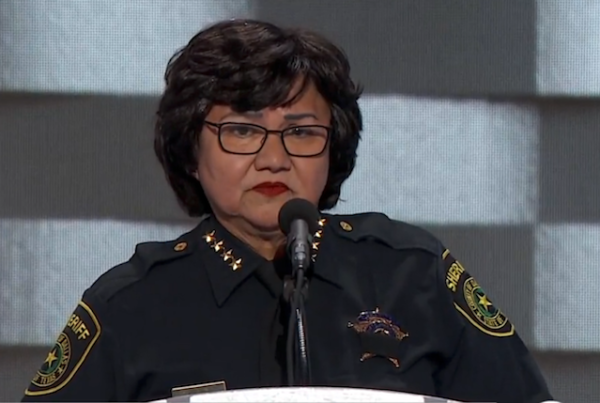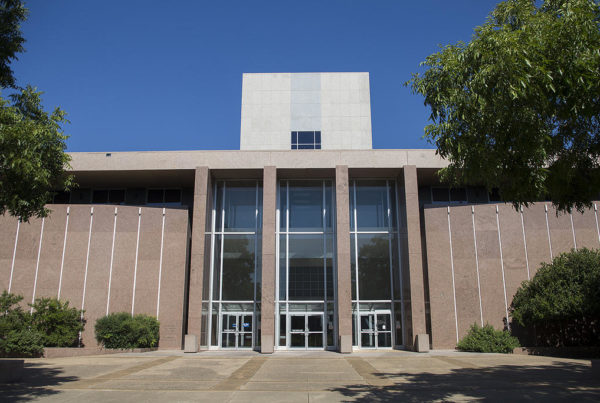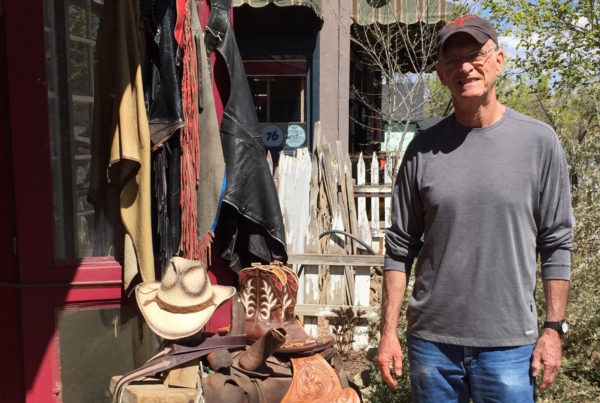From KERA:
A few dozen seniors settled into the Handley Senior Center in east Fort Worth on a recent Wednesday. Bingo day is always packed, says director Melvina Lenton
For many of her seniors, coming to Handley is their only chance to socialize regularly, which study after study has linked to greater health and longevity. Many seniors rely on the daily meals the center provides.
“For some of our seniors this is the only nutritious meal they get all day,” Lenton says. “We save lives in so many ways. The hunger, the socialization, that’s needed among our seniors.”
Another issue is finding jobs. Jackie James, a retired teacher, says it’s not easy for seniors to find a job that work for them.
“If you’re trying to stretch your budget, which is always helpful, that is hard,” she says. “A lot of people won’t even interview seniors.”
James isn’t the only one who noticed this. When the AARP surveyed older folks in Fort Worth this spring, job opportunities were a big issue. Seniors also said they want more public transit and a more walkable Fort Worth. That survey was part of the organization’s push to make cities more responsive to people as they age.
“Ultimately, the goal is to help cities prepare for this gray wave, this silver tsunami, whatever you want to call it, of seniors who are going to turn 65,” says AARP’s Carmel Perez Snyder, who got the initiative off the ground in Fort Worth. She’s since transferred into a different role with the organization.
The City of Fort Worth is working with the AARP, nonprofits and businesses to prioritize development that works for people of all ages. The idea covers a lot of ground, from access to housing, healthcare and social activities to figuring out what seniors need to live actively and independently. Perez Snyder says more than a quarter of Fort Worth residents will be over 65 by 2030.
“There’s going to be a greater need for that transportation, there’s going to be a greater need for that affordable housing that’s accessible, that’s universally designed,” she says. “There’s going to be a greater need for sidewalks that can transport people, that people can walk on safely.”
Perez-Snyder worked with neighborhood associations and city officials to conduct walking audits of all over Fort Worth. The goal: get out and see what kind of impediments there are for people with limited mobility.
“Once you do a walking audit, you never look at a street the same way again,” Perez Snyder says.
On one block of Fort Worth’s Fairmount neighborhood, she pointed to wider sidewalks and clearly marked crosswalks – all good things to make people feel safer as they walk. But runoff from recent rains have left some of the crosswalks littered with pebbles.
“That’s going keep you from moving forward if you use a walker,” she says, “or if you’re someone who’s not super sturdy, has a cane, that’s a falling hazard. People can fall because of that.”
Most of Fort Worth is built on what urban planners call a drivable suburban model – single family homes, big lawns, everything built for people to drive around. Dana Burghdoff is the assistant director of the city’s planning department.
“The city didn’t require sidewalks along streets until the early 2000s, so we have many neighborhoods and major streets where we don’t have sidewalks,” Burghdoff says.
Burghdoff says more people –seniors as well as millennials – are interested in more walkable urban environments these days. Public transit, she says, is crucial for seniors who don’t drive anymore. Officials say Fort Worth spends less on mass transit than most other big Texas cities.
“The need for transportation has come up in all of the conversations we’ve had to date, including housing, outdoor spaces and buildings, civic participation and employment, social inclusion,” she says.
Back at the Handley Senior Center, Jackie James says more transit is needed, but Fort Worth is still a good place to grow old.
“You know, I feel like they’re at least listening, the city officials are at least listening to what you have to say for what’s good for seniors, and that’s always a good starting point,” James says.
After all, she says, there is one thing that unites all of the city’s residents: Everyone’s getting older.

















